M35 and NGC2158
Click image for full size version
January 23, 2016; SkyNews online “This Week’s Sky,” Feb 8-15 2016, May/June 2016 SkyNews magazine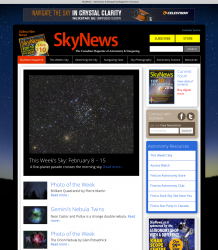
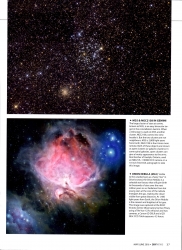 M35 is the large prominent star cluster near the centre of the field. It’s almost the size of the full moon in the sky and is about 2,800 light years distant. To its lower left is NGC2158, another similar star cluster that lies much further away, at 11,000 light years away. The redness of NGC2158 is mostly due to its age of around 2 billion years; M35 is much younger and still contains many hot blue and white stars. Both of these objects are known as Open Clusters (or Galactic Clusters). In other spiral galaxies, the same type of object gives a knotty appearance to the arms. I love open clusters, though I more often shoot extended objects like galaxies and nebulae. They’re particularly good for shooting on nights that might not be suitable for nebulous faint objects.
M35 is the large prominent star cluster near the centre of the field. It’s almost the size of the full moon in the sky and is about 2,800 light years distant. To its lower left is NGC2158, another similar star cluster that lies much further away, at 11,000 light years away. The redness of NGC2158 is mostly due to its age of around 2 billion years; M35 is much younger and still contains many hot blue and white stars. Both of these objects are known as Open Clusters (or Galactic Clusters). In other spiral galaxies, the same type of object gives a knotty appearance to the arms. I love open clusters, though I more often shoot extended objects like galaxies and nebulae. They’re particularly good for shooting on nights that might not be suitable for nebulous faint objects.
Tekkies:
SBIG STL-11000M camera, Baader RGB filters, 10″ ASA astrograph at f/3.6, MI-250 mount. Guided with internal guider in main camera. Focus with FocusMax. Acquistion, guiding and calibration with Maxim-DL. All processing with PixInsight. Shot from my SkyShed in Guelph, Ontario. No moon, poor transparency and seeing. This data for this image was acquired on January 21, 2012, and posted January 23 2016.
6x3m R, 5x3m G and 6x3m B unbinned frames (total=51m)
RGB
Creation and cleanup: R, G and B masters were combined with ChannelCombination, and the resulting RGB image was cropped and processed with DBE, followed by BackgroundNeutralization and ColorCalibration.
Linear Noise Reduction: MultiscaleLinearTransform was used to reduce noise in the background areas of the RGB image. Layer settings for threshold and strength: Layer 1: 3.0, 0.5 Layer 2: 2.0, 0.39 Layer 3: 1.0, 0.25 Layer 4: 0.5, 0.1. A mask was used to protect high signal areas.
Stretching: HistogramTransformation was applied to make a pleasing yet bright RGB image.
Synthetic Luminance
Creation and cleanup: The R,G, and B masters were combined using ImageIntegration tool (average, additive with scaling, noise evaluation, iterative K-sigma / biweight midvariance, no pixel rejection) to create the SynthL channel. The image was cropped to match the RGB and DBE was applied.
Deconvolution: A copy of SynthL was stretched to use as a deconvolution mask. A star mask was made from unstretched SynthL to use as a local deringing support. Deconvolution was applied (75 iterations, regularized Richardson-Lucy, external PSF made using DynamicPSF tool with about 20 stars; local deringing at 70% and global dark deringing at 0.01).
Linear Noise Reduction: MultiscaleLinearTransform was applied to reduce the noise. Layer settings for threshold and strength: Layer 1: 3.0, 0.6 Layer 2: 2.0, 0.5 Layer 3: 1.0, 0.4 Layer 4: 0.5, 0.15
Stretching: HistogramTransformation was applied to make an image with similar brightness to the RGB image. TGVDenoise was applied and the image was re-stretched to reset the black point.
Combining SynthL with RGB:
The luminance channel of the RGB image was extracted, processed and then added back into the RGB image as follows:
1. Extract luminance from the RGB image.
2. Apply LinearFit using SynthL as the reference.
3. Use ChannelCombination in Lab mode to replace the RGB’s luminance with the fitted luminance from step 2.
4. LRGBCombine was then used to make a SynthLRGB image.
Final Processing
Contrast, brightness and saturation were adjusted slightly with the Curves tool. Separate adjustments were made for background and stars using a mask.
Image scale is about 2.1 arcsec per pixel for this camera / telescope combination.

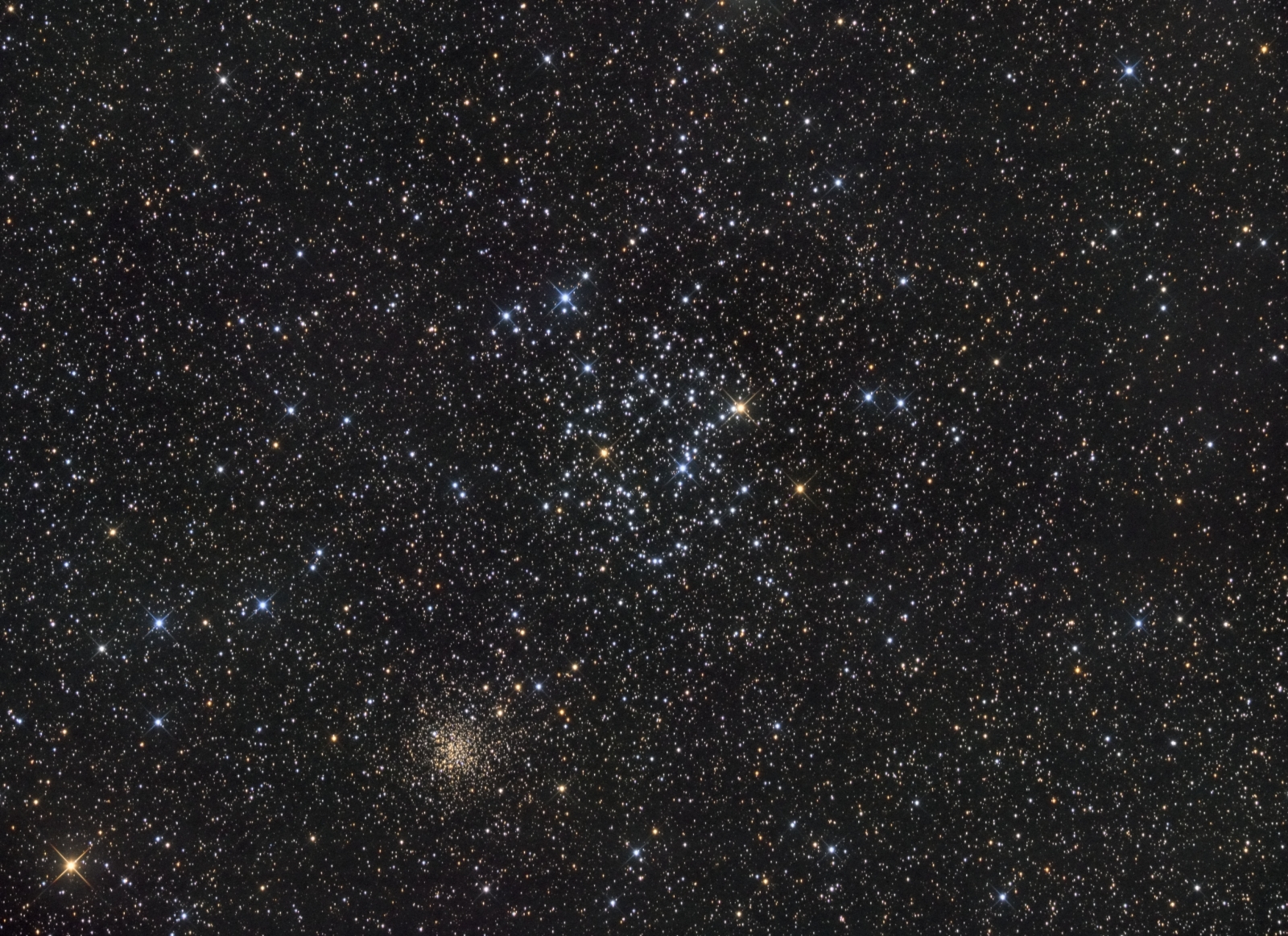



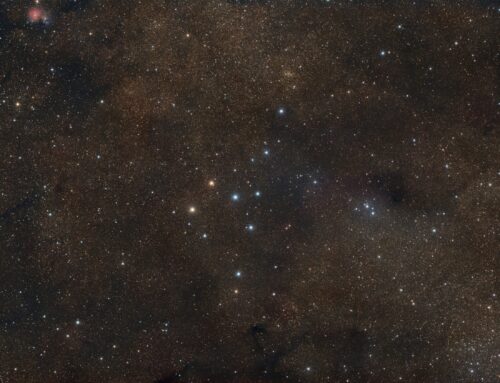
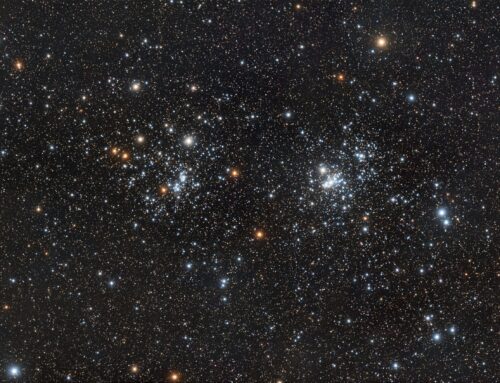
Leave A Comment